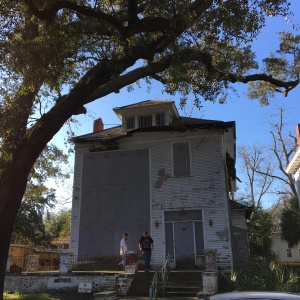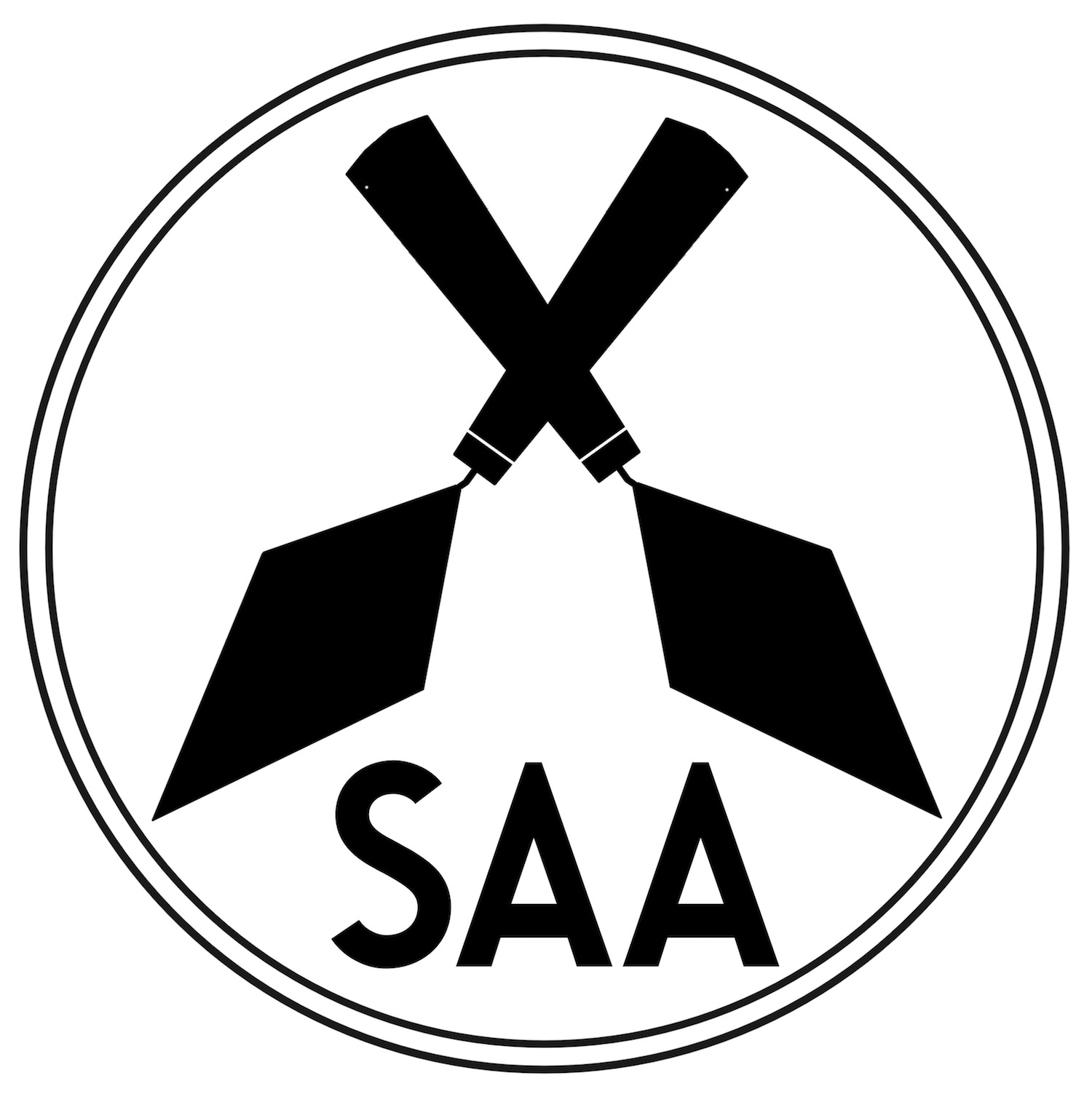One of our major initiatives is archaeological research at the Kiah House. Phase I investigations were conducted in the spring of 2018.
Archaeological and Historical Background
Located at 505 W. 36th street, the Kiah House is significant because it was the longtime residence of Dr. Calvin L. Kiah, a professor who led Savannah State College’s education department, and Virginia Kiah, a public school teacher from 1951-1963, artist, and curator of the Kiah House Museum on the home’s second floor. Dr. and Mrs. Kiah bought the house on May 5, 1959 from Marie F. Kelson. Mrs. Kiah died in 2001, and the house has been stuck in probate and unoccupied ever since (Segedy 2016). Consequently, the property has fallen into serious disrepair and is listed on the City of Savannah’s “100 Worst Properties”. “Because of the mayor’s agenda to combat blight properties this property is endangered. It’s important to be proactive regarding the documentation of the historical significance of the property through more oral history, community gatherings, cleanup campaigns, and an archaeological study. (Johnson-Simon 2017)

To the best of our knowledge, there has been no previous archaeology on this property, so we submitted the site to the Georgia Archaeological Site File. The Kiah House (9Ch1452) does not appear in the 1898 Sanborn Fire Insurance Maps, but it does appear on the 1916 version. The house is in the Cuyler-Brownsville neighborhood, which is one of the oldest African-American communities in Savannah. The neighborhood is bounded by Anderson Lane, 42nd Street, Montgomery Street, and Ogeechee Road (Johnson-Simon 2017).
Research Questions
This site holds potential for exploration of African-American history and bringing this history into greater and wider understanding. Research questions include:
- What were people eating? Can we identify African-American foodways?
- What types of medicine were used? What was the health status of the residents?
- What consumer choices were the residents making?
- Can we identify strategies for combating racism?
Once this site specific research is completed and the technical report is written, the research can be extended. The author has been involved in several late 19th, early 20th century African-American archaeological sites in Savannah. A comparative study is needed between the rural Freedmen school (1878-ca. 1890s) on Skidaway Island, the Sorrel-Weed Carriage House, perhaps showing African-American domestic labor in the late 1800s, the nineteenth century Railroad Ward houses, and the Kiah House. By comparing these very different types of sites, we can start to understand the breadth of the post-bellum African-American experience in Savannah.
Methodology
The literature search will gain basic information about the property and its inhabitants. Deed records, census records, and city directories are important starting points. The archaeological literature will also be searched for comparative examples.

The front yard is small, largely planted and difficult to access archaeologically. The western yard is also quite small. We placed one 1×2 meter test unit in the eastern side yard and a 1×1 meter test unit in the backyard. Test units will be added as time and the availability of labor permits. Students from the Armstrong Campus of Georgia Southern University and Savannah State University were the field crew for this project. Lab work was conducted on the Armstrong Campus Anthropology Lab. Analysis is ongoing.
Our partners are Dr. Deborah Johnson-Simon with the Center for the Study of African and African Diaspora Museums and Communities, (CFSAADMC), whose mandate is to tell the stories of African Diaspora museums, and the Friends of the Kiah House Museum and Foundation, which oversees the historic preservation efforts of one of the first museums in Savannah started by African Americans. This researcher believes there is great potential to combine public archaeology with the ethnographic research and neighborhood oral histories collected by Dr. Deborah Johnson-Simon. Not only will this provide a greater database of information, but this will allow for more community initiatives and involvement.
The excavations were open to the public and well attended. We made the front page of the Savannah Morning News and WTOC did a story. The technical report, results, and next steps will be available soon!
Bibliography
Johnson-Simon, Deborah
2017 Kiah House Museum Request, Powerpoint.
Sanborn Fire Insurance Maps, 1898 and 1916, available via the Digital Library of Georgia (http://dlg.galileo.usg.edu).
Saunders, CeCe and Susan R. Chandler
2001 Get the Lead Out. In Dangerous Places: Health, Safety, and Archaeology, David A. Poirier and Kenneth L. Feder, editors, pp. 189-204. Greenwood Published Group, Westport, CN.
Segedy, Andria
2016 Savannah Movement Fighting for Kiah House Museum. Savannah Morning News 20 June (online), Savannah, Ga.

